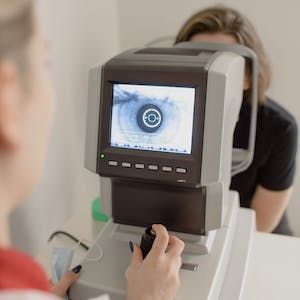Alcohol Intake, Smoking Initiation Associated With Risk For Advanced AMD
Genetic evidence show increased alcohol intake may be a causal risk factor for GA, while increased lifetime smoking was associated with risk of advanced AMD.

Although age-related macular degeneration is notably a leading cause of blindness in Western countries, a lack of non-invasive treatments has put a greater importance on identifying modifiable risk factors in order to develop preventive measures for advanced AMD.
Led by Valerie Kuan, PhD, Institute of Health Informatics, University College London, a team of investigators assessed whether smoking, alcohol consumption, blood pressure, body mass index, and glycemic traits were associated with increased risk of advanced AMD.
They observed genetic evidence that smoking initiation may have a causal association with risk of advanced AMD and smoking cessation has a lower risk of advanced AMD, while also noting increased alcohol consumption has a potential causal association with risk of geographic atrophy (GA).
Methods
The study consisted of 2-sample mendelian randomization. Summary-level data of genetic variants associated with smoking initiation, smoking cessation, lifetime smoking, age at smoking initiation, weekly alcohol intake, BMI, systolic and diastolic blood pressure, type 2 diabetes, glycated hemoglobin (HbA1c), fasting glucose level, and fasting insulin level were obtained from study samples.
The summary-level statistics for smoking traits, alcohol intake, BMI, blood pressure were obtained from published genome-wide association studies. Further, summary-level genetic association data for advanced AMD, GA, and neovascular AMD (nAMD) were obtained from the International AMD Genomics Consortium (IAMDGC) 2016 data set. Data were analyzed from July 2020 - September 2021.
Investigators performed univariable inverse-variance-weighted (IVW) 2-sample MR analyses under a multiplicative random-effects model to examine potential causal associations.
Findings
Data show the genetic predisposition to smoking initiation was associated with overall risk of advanced AMD (odds ratio, OR: 1.26, 95% CI, 1.13 - 1.40, P <.001).
They noted the results were similar for nAMD (IVW: OR, 1.26; 95% CI, 1.11 - 1.43, P <.001), while smoking initiation were not associated with GA (IVW: OR, 1.24; 95% CI, 1.03 - 1.49, P = .02).
Additionally, genetically predicted smoking cessation was protective for advanced AMD compared with persistent smoking (IVW: OR, 0.66; 95% CI, 0.50 - 0.87, P = .003). No association between smoking cessation and nAMD or GA was observed.
Moreover, genetically predicted lifetime smoking had an association with higher odds of advanced AMD (IVW: OR, 1.32; 95% CI, 1.09 - 1.59, P = .004). Data show this was similar for NAMD (IVW: OR, 1.41; 95% CI, 1.14 - 1.74, P = .001).
Then, investigators found no association between increased genetically predicted alcohol consumption and risk of advanced AMD using IVW (OR, 1.57; 95% CI, 1.03 - 2.40, P = .04). On the other hand, genetically predicted alcohol consumption was associated with higher risk of GA (IVW: OR, 2.70; 95% CI, 1.48 - 4.94, P = .001).
However, they noted insufficient evidence to suggest that genetically predicted blood pressure, body mass index, and glycemic trails were associated with risk of AMD.
Takeaways
“Given the deterioration in quality of life and the cost to health and social care systems of managing advanced AMD, increased funding should be allocated to smoking cessation and alcohol reduction programs to minimize the health burden of advanced AMD,” investigators wrote.
The study, “Association of Smoking, Alcohol Consumption, Blood Pressure, Body Mass Index, and Glycemic Risk Factors With Age-Related Macular Degeneration,” was published in JAMA Ophthalmology.